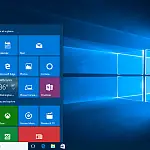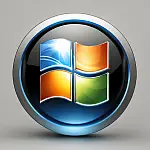Ultimate Windows 10 SSD Tweak Guide for PerformanceGetting the most from your new SSD with these simple tweaks for Windows 10 which result in a faster performing computer.
The settings in this Windows 10 SSD Tweak Guide should be used with caution. While they shouldn't do any damage, things, like disabling system restore, could leave you without recovery options should things go wrong.

Use AHCI Storage Mode
You should find the setting in your BIOS (Basic Input Output System) which controls the storage mode. This can usually be found on the page to configure your hard drive settings. You should refer to your motherboard manufacturer's instruction manual for the exact procedure.
This setting needs to be set to AHCI which is Advanced Host Controller Interface, as opposed to IDE/SATA/PATA.
Verify TRIM is enabled
TRIM is a command used by Windows to tell the SSD to mark blocks of memory as overwriteable. If TRIM is disabled, then a file deletion in Windows will result in extra write commands being sent to the SSD. Since write commands are bad for an SSD, TRIM allows the same effect without writing information to the drive.
To verify that TRIM is enabled (most of the time it is enabled by default) use the following command.
fsutil behavior query disabledeletenotify
You will see a short message stating one of the two results:
- DisableDeleteNotify = 1 (Windows TRIM commands are disabled)
- DisableDeleteNotify = 0 (Windows TRIM commands are enabled)
If TRIM is disabled, you can enable it by typing into the command line:
fsutil behavior set DisableDeleteNotify 0 Disable Automatic Defragmenting
Traditional Hard Drives store data sequentially on a physical platter. Files often become defragmented (split up into multiple parts, scattered throughout the surface of the disk) over time and excessive fragmentation results in poor performance as the read heads in the drive have to move around a lot more to get all the pieces of the file. A defragger puts all the pieces back together so the head does not have to move so much.
SSD does not have this problem as there are no moving parts, and there is no performance loss on fragmented files so there is no point in spending CPU time defragging an SSD. Defragging also causes a lot of reads/write commands, and write commands are bad for an SSD.
To disable automatic defragging in Windows, click on the Start button, in the "Search Programs" text box, type in defrag, then click on Disk Degragmenter. Click on the Configure Schedule Button and untick the box for Run On a Schedule. Save and close the disk defragmenter.
Disable System Restore
System Restore saves a backup of everything you do on the drive so that you can revert changes back to a previous point in time. Since this feature is seldom used, and it again created many extra write commands it is best to disable this feature.
To disable System Restore, click on the Start menu, right-click on the "Computer" menu and then Properties from the popup menu. On the left side of the window, click System Protection and then highlight the drive partition on your SSD and click Configure. On this screen, click the radio button to turn off System Restore, then click OK and Close.
Reduce Page File Size / Swap File Size
It's always best to configure a static page file size in Windows, rather than let it decide how much to use, but this is doubly so for an SSD. A page file is used when the system runs out of physical RAM. Old entries in memory are written to the page file, then removed from RAM freeing up space. If they are needed again later, they are read from the disk or swapped back into physical RAM. The more this happens, the slower system performance is and the more writes that occur on the SSD.
To set the page file size, click on the Start menu, right-click on the "Computer" menu and then Properties from the popup menu. On the left side of the window, click Advanced System Settings and under the Advanced tab, in the Performance section click Settings. Again, click on the Advanced tab, and under Virtual Memory section, Click Change. Untick Automatically manage paging file size for all drives and highlight your SSD and underneath it, click the Custom Size radio button. Under Initial Size and Maximum Size, type in 1024 and then click Set and click OK.
You must reboot for this to take effect, but wait until you have completed all steps.
Disable Recycling Bin on your SSD
The Recycle Bin intercepts file delete commands and simply moves the file to another location instead. This allows you to retrieve deleted files with ease, but on an SSD it causes increased write commands, the enemy of SSDs. Instead, by disabling the Recycling Bin the file is deleted immediately.
If you frequently find yourself restoring from the Recycling Bin, you should probably skip this step.
To Disable the Recycling Bin, right-click on it on the desktop and click Properties. Under Settings for the selected location you will see a radio button called Don't move files to the Recycling Bin. Remove files immediately when deleted. Click this radio button and click OK.
Disable Indexing on your SSD
Indexing allows faster file searches by scanning through all your files and writing out a database that links keywords with files. This results in faster searches, but at the expense of additional writes and slower overall performance.
You can disable automatic indexing by opening up My Computer and locating the SSD drive letter. Right-click on it and click Properties. In the General tab, there is a tick box called Allow files on this drive to have contents indexed in addition to file properties, uncheck this box and hit Apply. If you get a message that says Error Applying Attributes, click Ignore All and it will disable indexing on all files on your SSD. This process may take some time.
Disable Superfetch
Superfetch is a Windows Service that remembers your most used applications and preloads them into memory so that they launch faster when you need them. There are two problems with this. Firstly, this takes up a lot of available RAM, and secondly, SSDs are so fast any way you simply don't need to preload applications.
To disable Superfetch, launch the registry editor by typing regedit.exe into the run programs box.
Navigate to the key HKEY_LOCAL_MACHINE\SYSTEM\CurrentControlSet\Control\Session Manager\Memory Management\PrefetchParameters where you will see a Binary Value called EnablePrefetcher. Double-click on EnablePrefetcher and change the value from 3 to 0.
You must reboot for this to take effect.










